Seven Second Version:
We chose the wrong spot, but built on the right foundation—because in life and building, what you stand on matters more than where you start.
When we bought raw land in Alaska, I thought: Hey, how hard could this be? A little brush clearing, a bunch of YouTube videos, maybe a rented skid steer for a weekend of character building and playing with big boy toys… while my wife was nearing the end of her pregnancy and we were expecting our second with a 16 month old running around.
But after walking the land, considering all the rocks, roots, and mystery mounds (and after a good talk with a neighbor who’s done dirt work for decades), I made one of the best early decisions of the whole Yurtstead project: I hired a pro with a dozer.
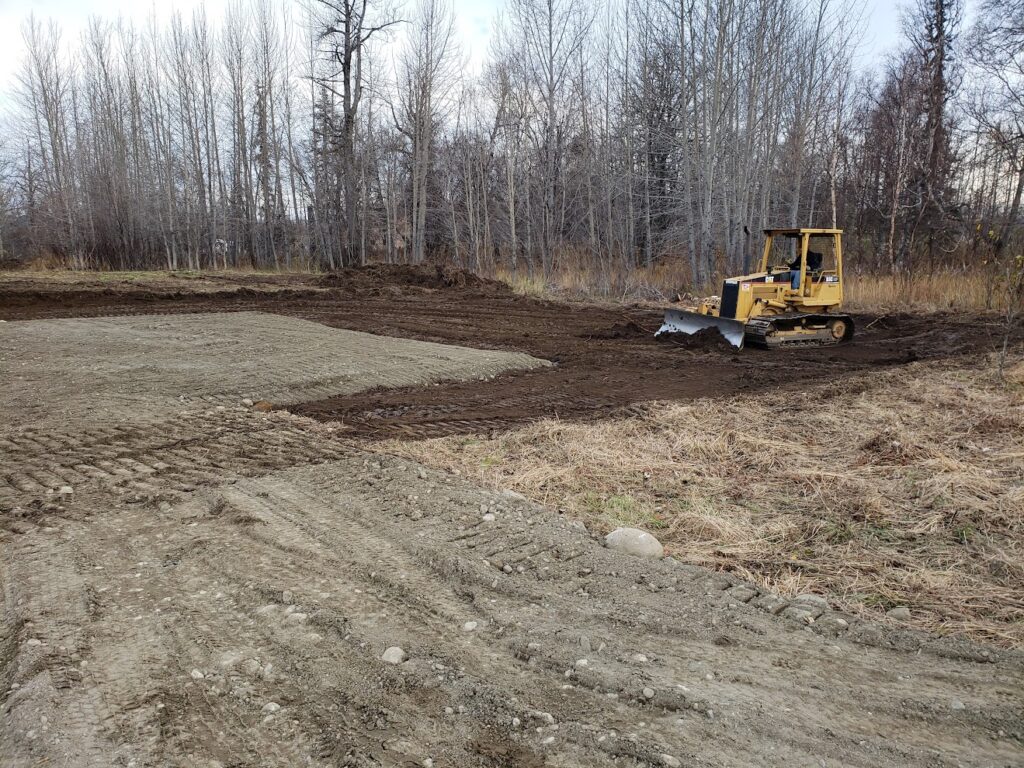
And let me tell you—he was awesome. The kind of guy who makes you wonder if the machine is just a machine, or a robotic extension of his spine. He did in two days what would’ve taken me a month, a tank of diesel, and a wife going into labor (the diesel was for the machine, not the labor).
He also did a better job than I ever would have. Except—and this is where things got fun—he let his girlfriend run the dozer for a bit. Which is fine. She had experience running excavators. Except this time, she was running the dozer… and she kind of scooped out the one spot I’d marked not to dig. Right where the yurt was going to go.
It was an honest mistake. I should have been clearer and honestly, she still did a better job than I would have. I wasn’t too worried at the time. But oh, Past Jared… your “not too worried” optimism is adorable.
Build high, friends. Not in a bowl. That one’s going to come back in a later post with a vengeance.
Location, Location, Mistake
Now, if you’re building anything—even a glorified round tent— especially a glorified round tent — location matters.
You want high ground so water drains away from your structure.
You want shelter from the wind so your yurt doesn’t sound like it’s prepping for liftoff during winter gusts.
You want privacy—because even with great neighbors (and we do have awesome ones), it’s still nice not to hear every passing truck or plow.
So naturally, I ignored all of that.
We were so focused on turning the yurt into a future short-term rental that I planted it right on the front corner of the property. My brilliant logic? “We’ll keep the rest of the land for us.”
In doing so, I missed pretty much every key factor for good placement: wind, privacy, high ground… all sacrificed at the altar of “future hypothetical renters” and “saving the best for us.”
Did we get anything right? Actually, yes. The spot has great southern exposure, which means sunlight even on those dark winter days. It’s easy to access. And it’s not too far from the power pole and the well—just far enough to make installation annoying. Small wins.
Get It Right Before You Build It Up
Once the spot was (poorly) chosen and the land was cleared (expertly), it was time for layout. And this part had to be right.
Thankfully, I had just enough building experience to know that layout and foundation are non-negotiables. If you mess those up, everything else gets harder.
Also thankfully, my in-laws came up from out of state around that time for the birth of Skittle #2. My father-in-law—who’s a professional builder and incredibly skilled, but so humble about his abilities you might not realize it until you see his work—jumped right in and helped. I learned a ton working with him. We spent hours marking things out with string, flags, and spray paint like we were mapping out a very confusing crop circle. It was foundation time, baby… and almost baby time, baby.
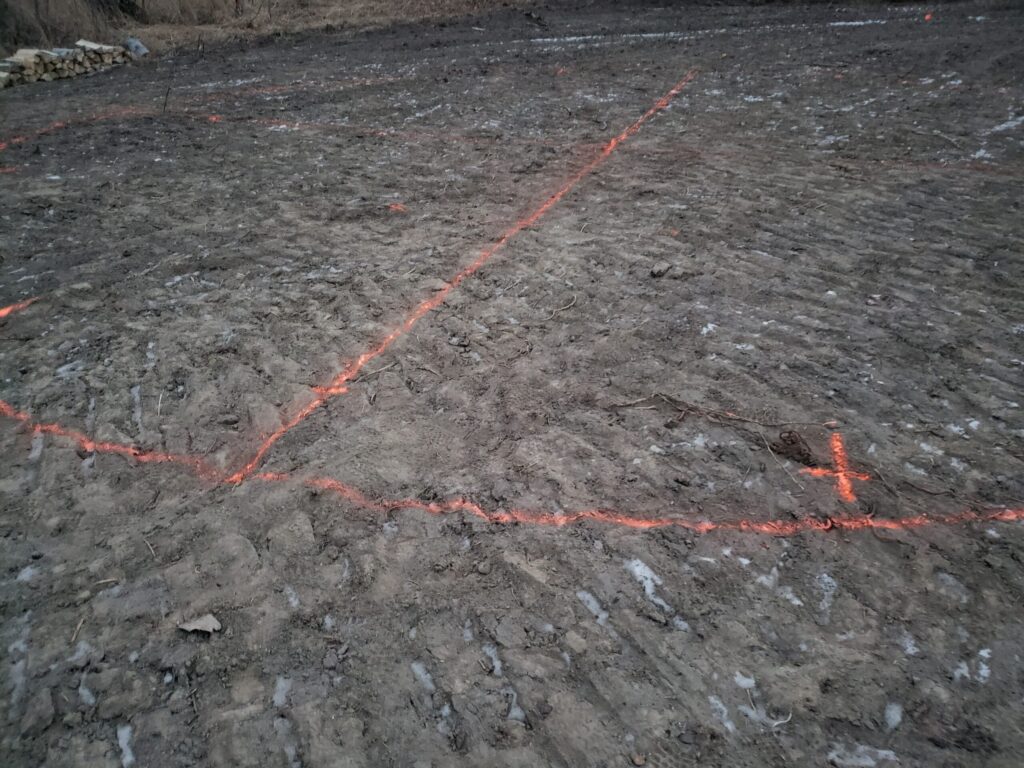
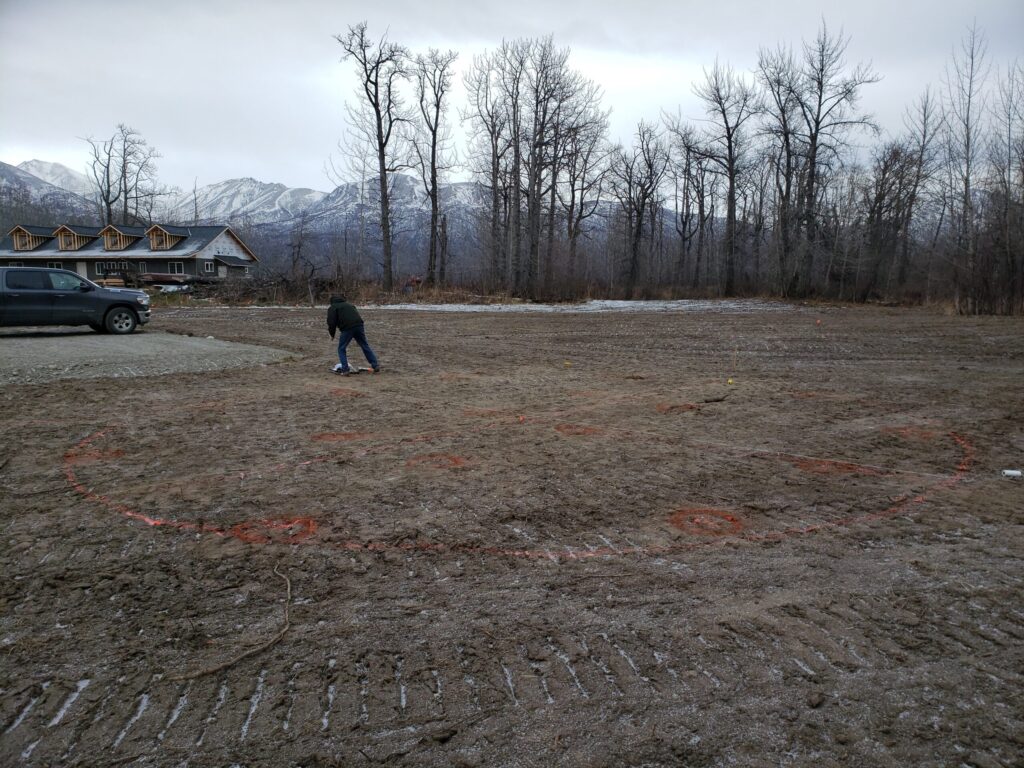
I weighed my options, talked to a bunch of people, and settled on a foundation of helical piers.
Then it snowed.
Of course it snowed.
But for my Alaskan friends, it only snowed. It didn’t SNOW snow, you know?
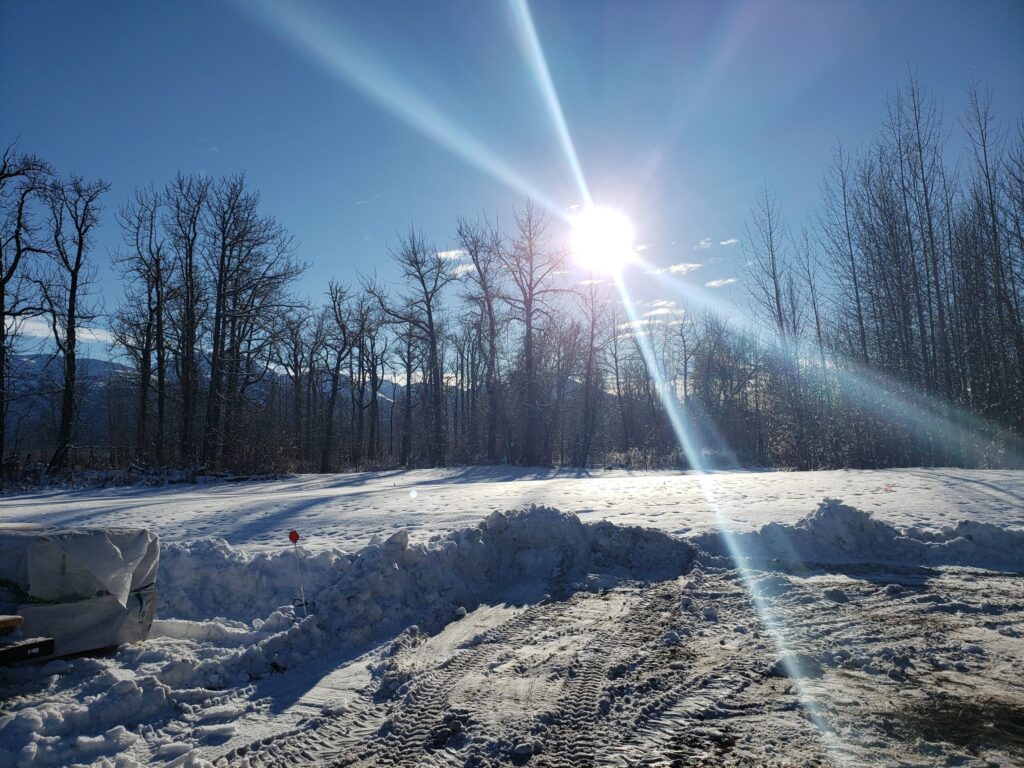
Why Helical Piers? Because Alaska.
Despite the surprise snow, and a day delay because of some minor detail like hauling an heavy trailer up a steep curvy hill in the snow, the crew from Techno Metal Post came out and installed the piers. These things are basically giant steel corkscrews that anchor deep into the ground and laugh in the face of frost heave.
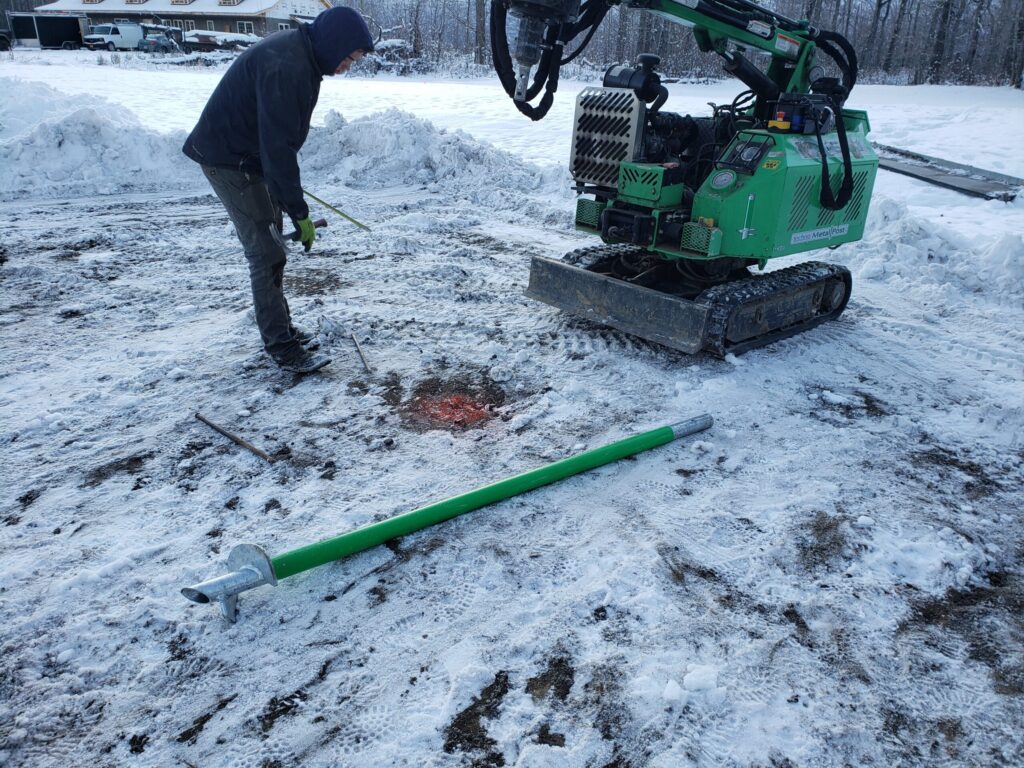
I planned for a 4-foot elevation—enough to stay above snow buildup (mostly) and create storage space underneath the yurt.
Would I go that high again? Probably not. But that’s a “Things I’d Do Differently” post for another day.
The install went great. The snow had mostly melted (yes, that does happen in Alaska if it’s not full winter yet), and just like that, we had a foundation that could handle earthquakes, theoretical 100+ mph winds that would never happen, and whatever else Alaska wanted to throw at us.
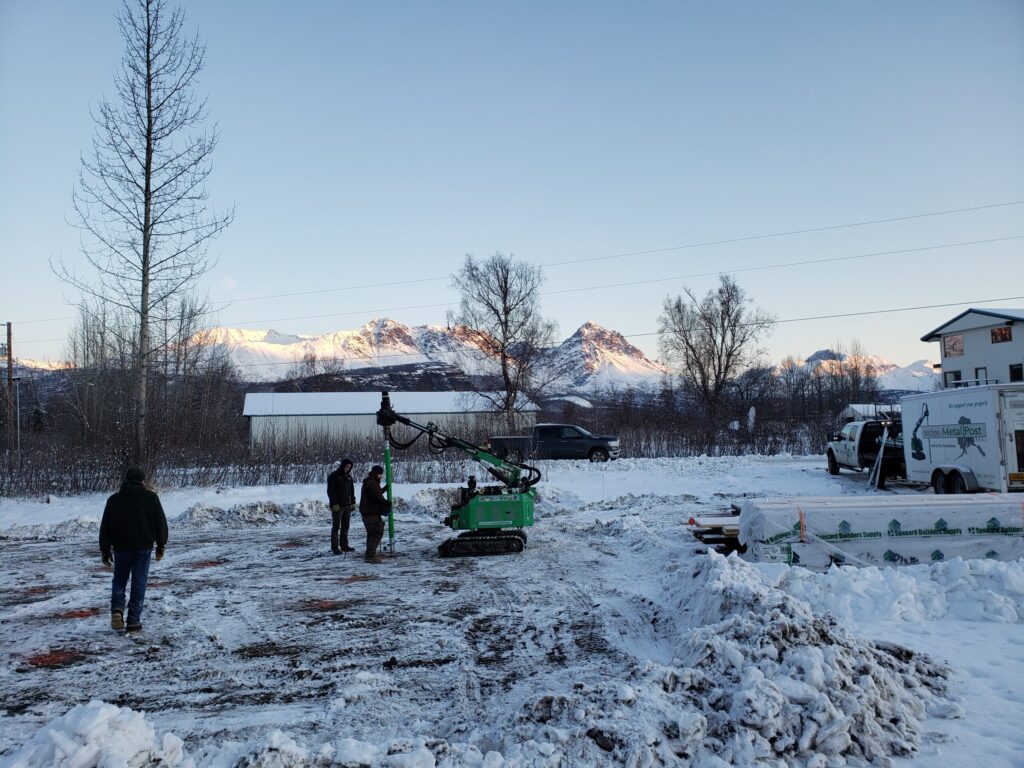
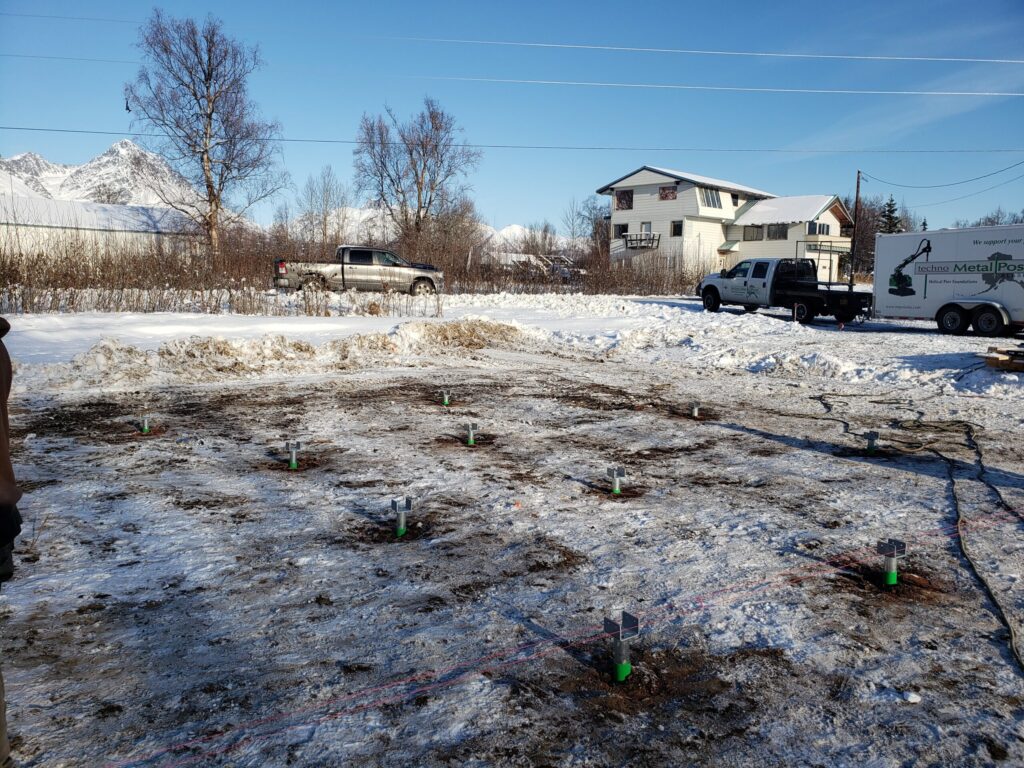
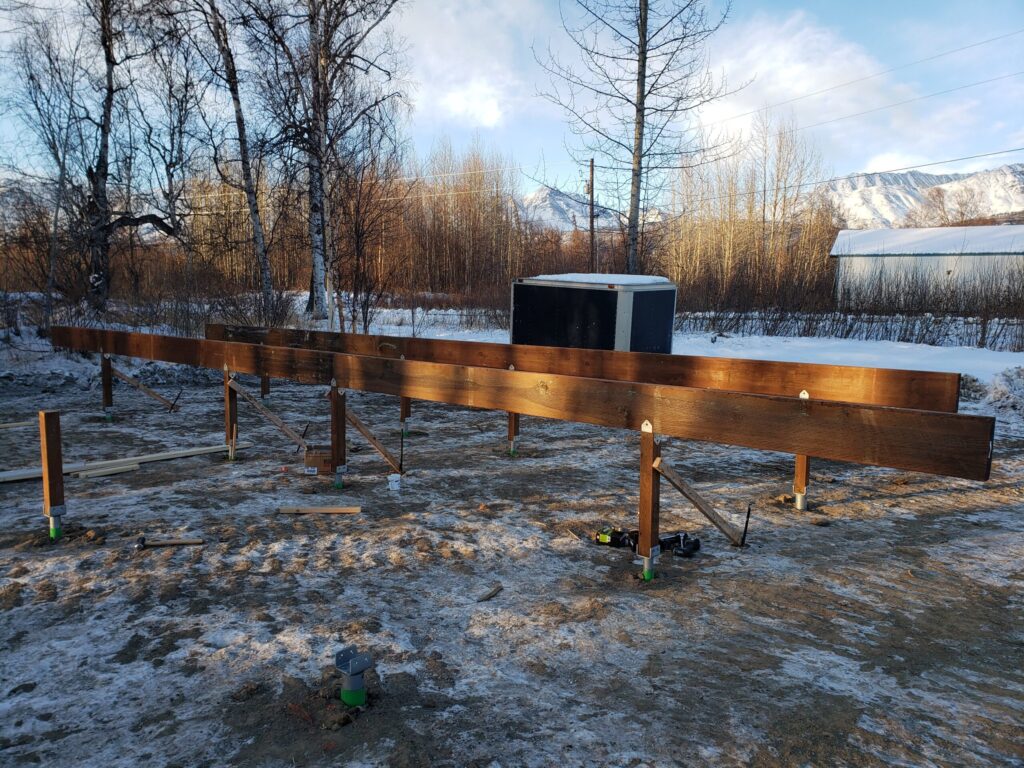
And here’s what hit me: even though I picked a not-so-great spot to build, the foundation itself was solid. Anchored. Unshaken. And that got me thinking…
Life’s like that sometimes. We don’t always choose the right place to plant ourselves. Sometimes we get it flat wrong—out in the wind, exposed, too close to the road. But even when our placement is off, the foundation still holds.
For us, that foundation is Jesus. No matter how badly we position ourselves in life (like I did with the yurt), when we build on Him, He is still secure. Still steady. Still strong—no matter what storms come.
The Takeaway: Foundation First. Then Forward.
The whole process—from land prep to layout to those rock-solid piers—drilled in two deeper truths for me (pun very much intended):
- The right foundation is crucial.
- Research is important, but action is more important.
You can’t rush either.
You can’t wing either.
You can’t fake either if you want something that lasts.
But at some point, you’ve got to stop second-guessing and just start building. Even if it’s not perfect. Even if you’ll do it differently next time. Because a solid but imperfect start is better than a perfect plan that never gets off the ground.
So whether you’re building a yurt, a homestead, a family, or a life—make sure the foundation you’re building on can actually hold.
For us, that means building on Christ. We might choose the wrong things, but He’s faithful. And when the winds howl (and they do), He holds us firmly.
Build high, lay it right, and move forward.
Build it on the right foundation.
Want to know about the only foundation that never fails? Message me on Facebook—I’d love to tell you more.
Next time: Framing begins, COVID-era supply chain prices rear their expensive heads, winter shows up for good, Skittle #2 makes an entrance, and the wind tests everything—including my patience.
Follow along at YurtsteadAlaska.com or on Facebook @YurtsteadAlaska.
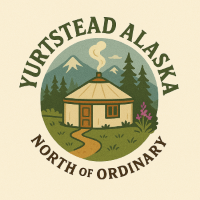
Pingback: How to Put a Roof on a Yurt (Or at Least Try Not to Launch It Into Orbit) - Yurtstead Alaska